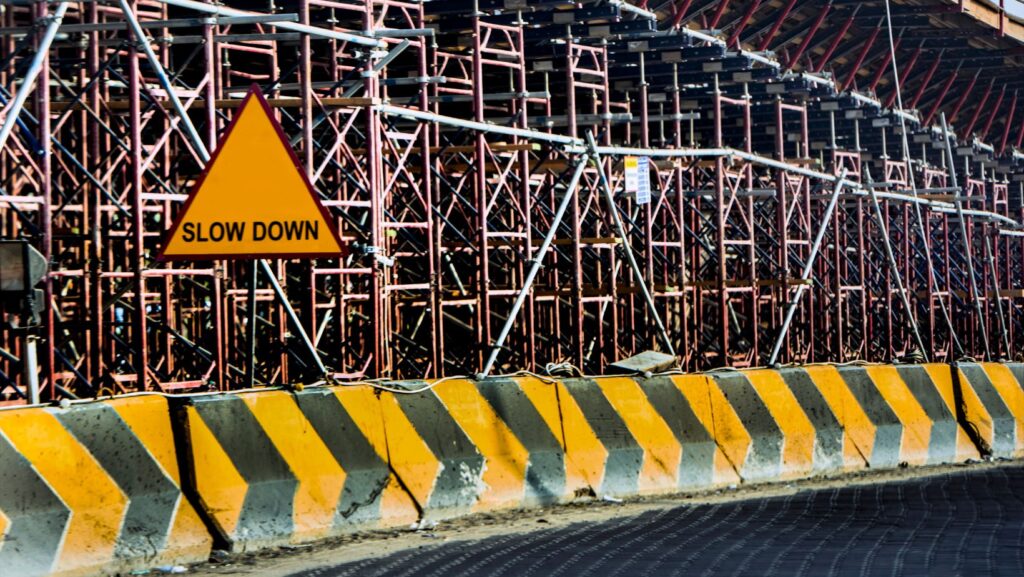
Concrete barriers are essential for safety and security in various settings. These robust structures offer effective protection against vehicle impacts, crowd control, and unauthorized access. They come in different sizes and designs, each suited for specific applications, and with the option to buy concrete barriers online, users can conveniently access a wide range of solutions tailored to their needs.
Concrete barriers excel in highway construction zones, parking lots, and high-security areas. Their versatility allows for both permanent and temporary installations. When placed strategically, they can redirect traffic, separate pedestrians from vehicles, and create secure perimeters around sensitive locations.
Proper installation and maintenance are crucial for maximizing the effectiveness of barriers, whether purchased locally or online. Regular inspections help ensure they remain in optimal condition, providing reliable protection against potential threats. By sourcing concrete barriers online, users not only benefit from easy access to various types but can also leverage these barriers to enhance safety across diverse environments by selecting the right options for their specific requirements.
Key Takeaways
- Concrete barriers provide robust protection in various settings
- Strategic placement enhances traffic control and pedestrian safety
- Regular maintenance ensures long-term effectiveness of concrete barriers
Design and Types of Concrete Barriers
Concrete barriers come in various designs optimized for different purposes. Key factors include shape, height, and installation method.
Jersey and F-Shape Barriers
Jersey barriers feature a distinctive profile with a broad base that narrows towards the top. This shape helps redirect vehicles upon impact. F-shape barriers are similar but have a lower slope on the traffic-facing side.
Both types typically stand 32-42 inches tall. Jersey barriers remain popular on highways, while F-shape barriers offer improved safety for smaller vehicles.
Temporary versus Permanent Installations
Temporary concrete barriers are modular and portable. They can be quickly deployed for construction zones or events. These barriers often have interlocking ends and may include steel reinforcement for added strength.
Permanent installations use longer, heavier sections. They’re anchored into the ground for maximum stability. Permanent barriers are common on highway medians and bridge parapets.
Specialized Barriers for Different Uses
Low-profile barriers suit areas with limited space. Standing around 20 inches tall, they maintain safety while preserving sightlines.
Constant-slope barriers have a uniform angle on the traffic side. This design can reduce vehicle damage and occupant injuries during collisions.
Legato blocks are stackable concrete units. They’re versatile for creating temporary walls or flood defenses.
Traffic barriers may include reflective elements or be painted in high-visibility colors. Some designs incorporate drainage channels to prevent water accumulation on roadways.
Practical Applications and Installation Techniques
Concrete barriers serve diverse purposes across various settings. Their versatility and durability make them essential for safety, security, and crowd management in different environments.
Enhancing Traffic Safety in Construction Zones
Concrete barriers play a crucial role in protecting workers and motorists in construction zones. They create a physical separation between active work areas and traffic lanes. Installation involves placing barriers end-to-end along the roadside, forming a continuous wall.
Proper anchoring is essential to prevent movement during impacts. Crews often use asphalt overlay or specialized pins to secure barriers to the road surface. This ensures stability and maximizes deflection capabilities during collisions.
Reflective markings or attached lights improve visibility, especially at night. Regular inspections help maintain barrier integrity throughout the construction project.
Protection in Commercial and Military Premises
Concrete barriers provide robust security for commercial and military installations. Their placement creates controlled access points and deters unauthorized entry. Installation typically involves strategic positioning around perimeters and vulnerable areas.
For permanent setups, barriers may be partially buried or bolted to the ground. This increases stability and resistance to tampering. In temporary scenarios, interlocking designs allow for quick deployment and reconfiguration as needed.
Some installations incorporate additional features like:
- Reinforced steel cores
- Anti-climb tops
- Integrated surveillance equipment
These enhancements further boost security capabilities without compromising the barriers’ core strength.
Innovative Uses in Public Spaces and Events
Concrete barriers find creative applications in public spaces and events. They serve dual purposes of safety and functionality. In urban settings, painted barriers double as street art or planters, adding aesthetic value while managing traffic flow.
At festivals and outdoor concerts, barriers create clear pathways and designated areas. Their modular nature allows for easy setup and removal. Event organizers often use them to:
- Support temporary fencing
- Anchor festival tents
- Create safe pedestrian walkways
Some designs feature built-in seating or flat tops for versatility. This adaptability makes concrete barriers valuable assets for urban planners and event coordinators alike.
Conclusion
Concrete barriers serve as versatile and essential tools for safety, security, and traffic management. Their robust construction and adaptable designs make them suitable for a wide range of applications. From protecting construction sites to enhancing event security, these barriers effectively control access and mitigate risks.
When strategically placed, concrete barriers can significantly improve road safety and reduce accidents. Their durability and low maintenance requirements make them a cost-effective solution for long-term use in various settings.














